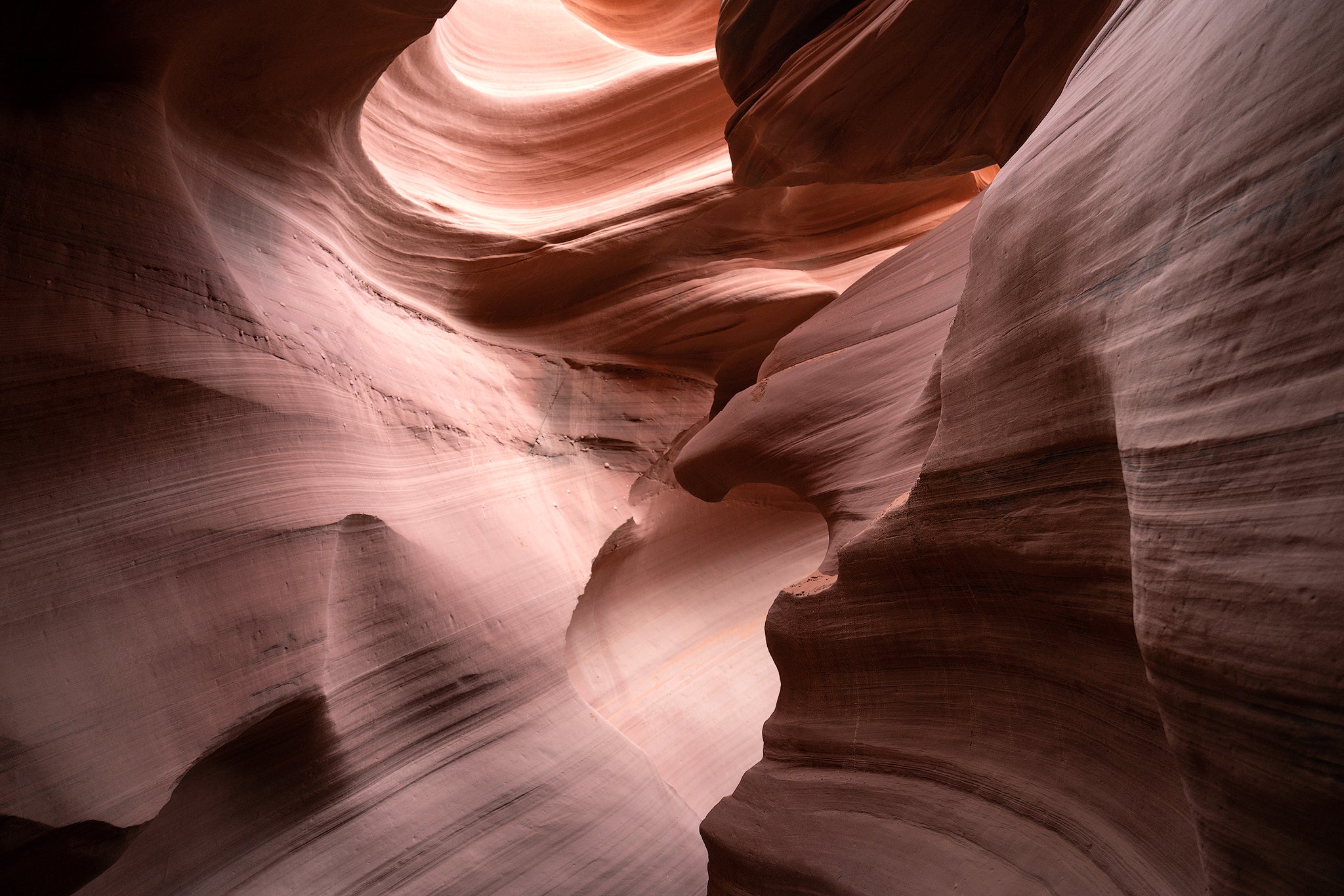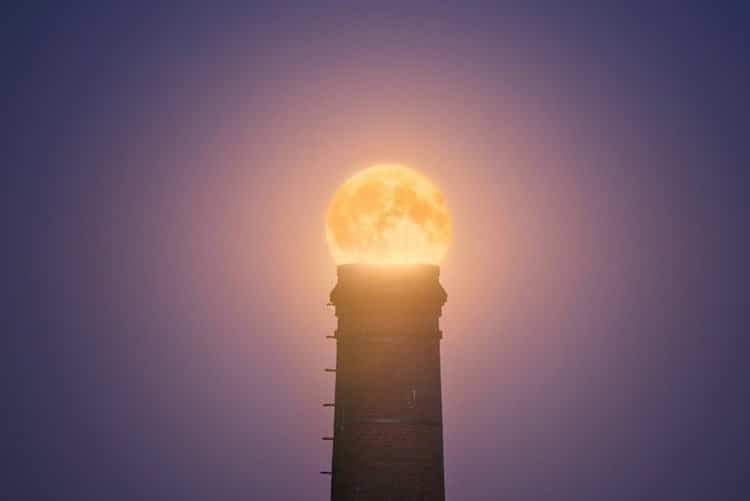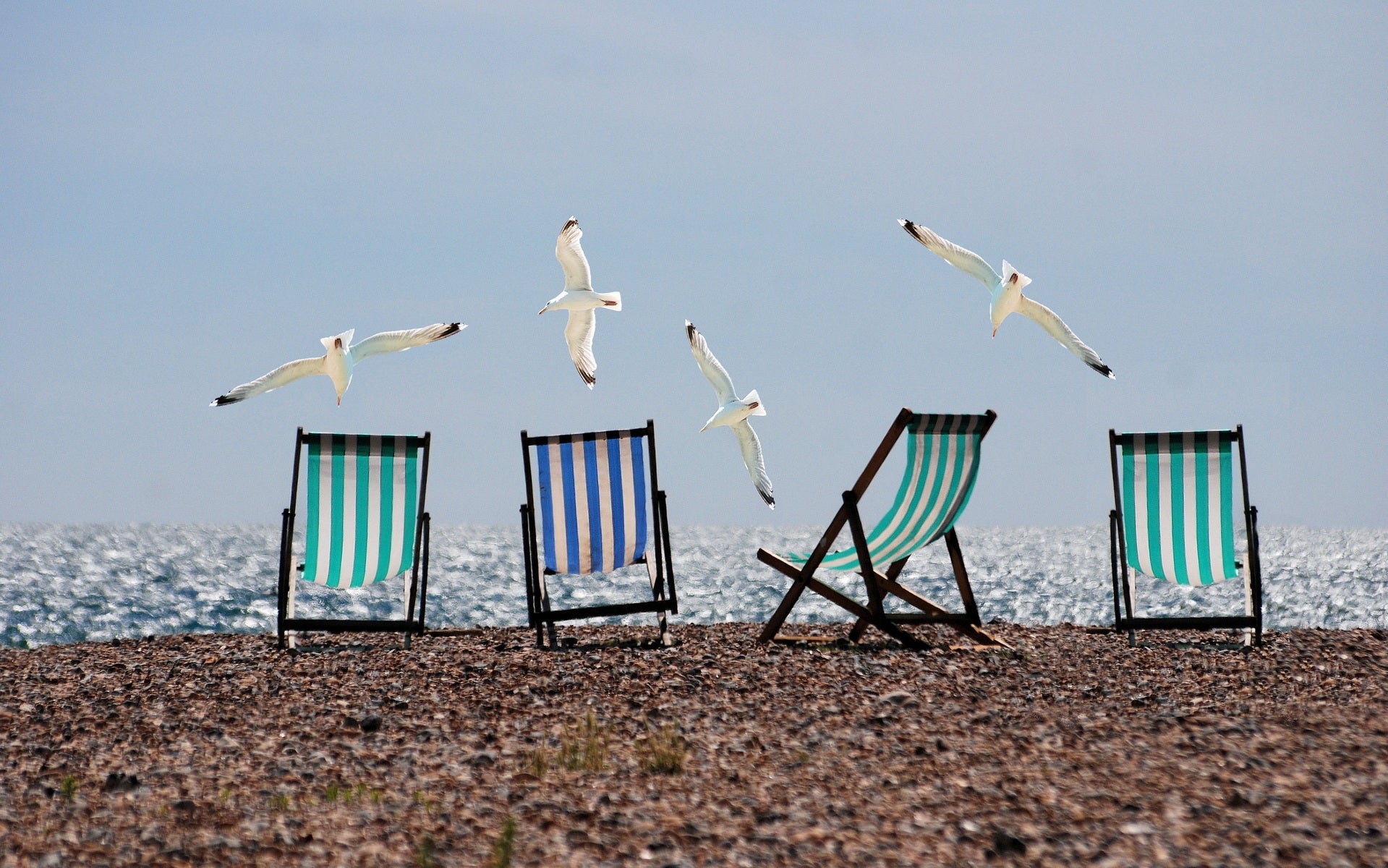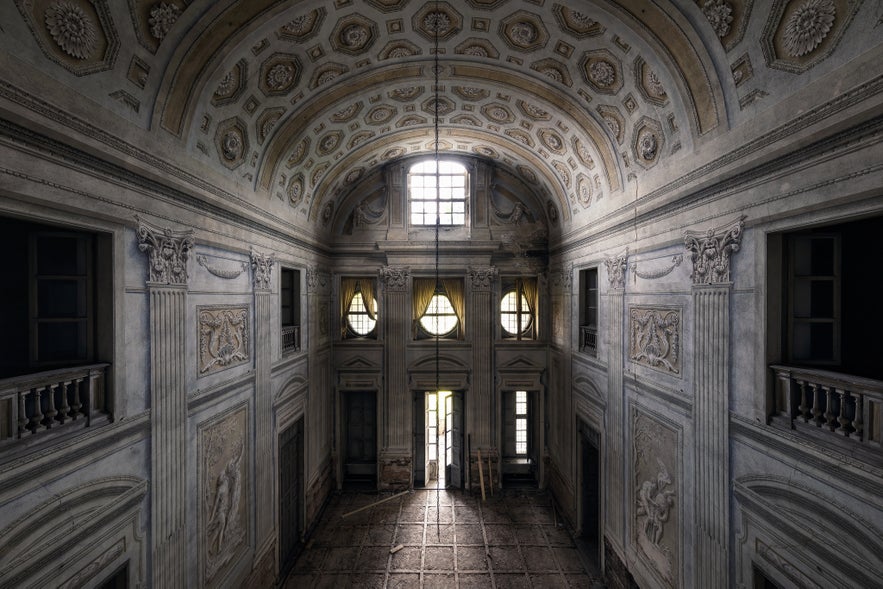
Urban exploration photography (also known as 'urbex' photography) has been rising in popularity. In case you've never heard about it, this guide is designed to be your introduction to this special field of photography. We'll go over everything you need to know to get started, including how to scout for locations, what you need for taking pictures once you get there, safety guidelines, as well as how you can process your images to make them really pop.
- Check out these 12 Tips for Capturing Amazing City Skylines
- Discover How to Make Mesmerising Minimal Photography
- Find out more about Photography Techniques
What is Urban Exploration Photography?
Urbex is a subfield of architecture photography, which takes many different forms. Mostly, it is about exploring the urban habitat and the countless exciting places within it.
This usually involves entering abandoned buildings such as old factories, derelict residences or other urban ruins. The aim is to document the building's state of decay. It is all about examining what happens to these buildings after the former inhabitants are long gone and how nature reclaims these places step by step. All sorts of oddities can be found in these places, from antique furniture to old machines.
 Old Château on the french countryside. Abandoned for only twenty years, the nature reclaimed the territory and most of the castles’ inside is destroyed due to the moist creeping in through the roof. Photo by: 'Felix Röser'.
Old Château on the french countryside. Abandoned for only twenty years, the nature reclaimed the territory and most of the castles’ inside is destroyed due to the moist creeping in through the roof. Photo by: 'Felix Röser'.
Although it is a lot of fun and really exciting to delve into the history of an abandoned place, it can also be really dangerous. Rotten structures, mould or asbestos are only some of the risks that you face when you enter a derelict building. The most dangerous part about it is that in some cases, it is illegal and you can be prosecuted for trespassing when you enter a place without the permission of the owner. I will go deeper into this later in the article.
- See also: How to Get Creative with a Fisheye Lens
Legal Issues
Let's talk about the unpleasant part first. Urban exploration is a genre of photography that floats in legal limbo. In some countries, you will be committing a crime if you enter a property without permission. We stand firmly against our readers breaking the law, so you'll be pleased to know that there are ways to enter abandoned buildings legally.
Oftentimes, former public buildings have security guards or a caretaker who is in charge of looking after the place. You can always ask for permission to access the site directly at the location. This is the best way of seeking access and remember, you won't get what you don't ask for.
Another way of accessing abandoned sites is to do some research on the Internet to see if you can find the owner. You can also ask at the local community in which the building is located for some advice about who owns the place. Neighbours can be a big help in this regard.
For some buildings or abandoned sites, it can be hard to track down the owner. In these cases, there are photographers who decide to enter anyway, either through an open door, a window or a hole in the wall. If you do this, then be aware that you may be subject to arrest by police. The rise of urban exploration has resulted in more incidents with local law enforcement.
Safety Precautions
If you are able to gain access to an abandoned site or building, then we have some safety advice on how you should proceed to enter.
First of all, it's important that you make it inside without causing any damage. Don't break down doors, smash windows or force your way through small gaps. As with landscape photography in nature, the most important value to uphold is to leave no trace, only footprints.
 Left: A collapsed fresco inside an abandoned Villa in Italy. Middle: Floors that have collapsed inside a French château due to an unsealed roof. Right: Green mould and a collapsed roof inside a former school. Photos by: 'Felix Röser'.
Left: A collapsed fresco inside an abandoned Villa in Italy. Middle: Floors that have collapsed inside a French château due to an unsealed roof. Right: Green mould and a collapsed roof inside a former school. Photos by: 'Felix Röser'.
As you can see from the pictures above, the dangers that you face inside rotten buildings are manifold. Imagine that you enter a higher floor without knowing that the wooden beams underneath your feet are rotten due to an unsealed roof. The whole floor can collapse beneath your weight. Spooky, isn’t it? Unfortunately, this exact scenario happened a while ago to an urban explorer at an old villa in northern Italy. Luckily, they survived!
The chances of accidents occurring are increasing with more people getting into urbex photography. In order to avoid incidents such as this, you really need to undertake safety precautions.
To me, urban exploration is a team thing. I always try to enter abandoned places with a good friend. This way, in the case of an accident, you'll have someone with you whom you can trust. They can help or seek assistance if you get injured or worse. Having someone else with you is a good idea because you can also discuss beforehand whether the place seems safe enough to enter or not. Four eyes see more than two, that’s for sure. Sometimes it can also feel really creepy in places like these, so it's good to have someone else around!
Even if you undertake urban exploration with a friend, it's a good idea to let someone else know where you are. If something happens to you and your friend, then there will be someone else out there who knows where to find you and to get assistance if you need help.
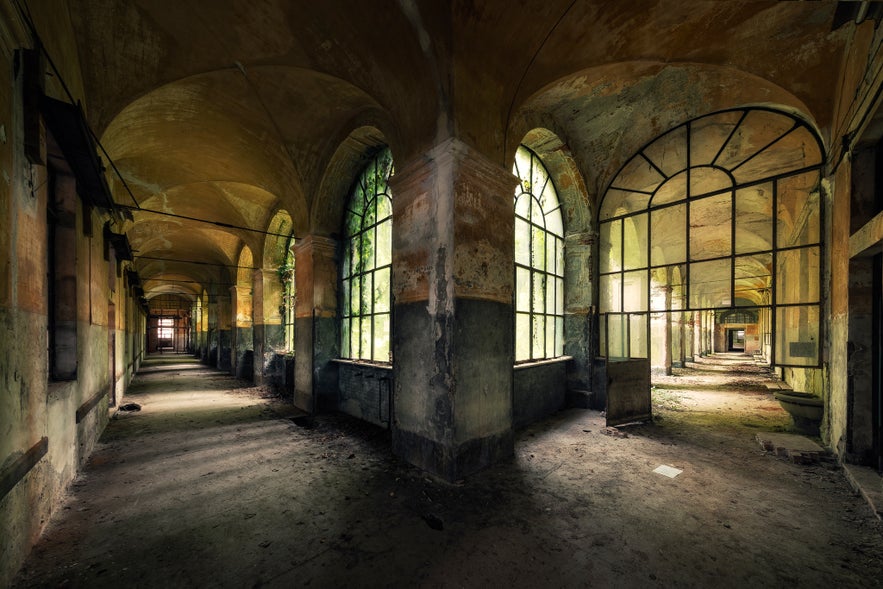
Aside from checking the floor or the ground beneath your feet, you should check if the roof is still intact prior to entering a building. It is safer to walk inside a building with an intact roof than one without. If you see big holes in the roof and it smells wet or mouldy inside the building, then you need to be really careful! Gently check the ground beneath your feet. You won't believe how quickly a building can fall apart due to a leaky roof. Loose bricks and beams can be a threat, too.
Speaking of feet, prior to entering an abandoned building, you should put on some solid shoes. Rusty nails, shards of glass and rubble are not the most comfortable things to walk on.
If you have done your research well, then you might know beforehand when the building was constructed. This is important to minimise your risk of exposure to asbestos. Asbestos can harm your lungs really badly. If you're not sure whether there is asbestos in the building, bring along a dust or a gas mask. These are good to have on-hand anyway, as mould and dust can also cause respiratory and other health problems.
When accessing abandoned sites, you can sometimes run into other people. In general, you should try to avoid them as you never know what they are up to and if they have good intentions or not. Some may be looters searching for copper cables or anything else that might be valuable. These guys are usually not very respectful of their surroundings and most of the time, they won't be amused about having witnesses onsite. If you do encounter people like this, keep your distance and try to avoid them. The best thing to do in this circumstance is to leave the location. They can get you into trouble for obvious reasons.
How to Find Abandoned Places
The most exhausting thing about urbex photography can be the research that's involved, especially when you are trying to find a certain location. Once you get used to it and work out a system for searching for things that may want to stay hidden, it can be a lot of fun... almost like looking for Easter eggs.
The obvious solution is to ask other urbex photographers for locations. If you type 'urbex photography' in a search engine, then you will likely come across a few forums where you can sign up and get started. There are also Facebook groups specifically for urban photography, which can put you in touch with lots of likeminded people really quickly.
Most of the time though, other photographers won’t give away their geotags for free. In online forums, there is huge active community made up of people trading locations for other locations. In order to take part in this trading game, you will need to have your own locations first. How can you get those?
Well, there is an easy way and it is how I find about 80% of my locations: The satellite map on Google Maps or Google Earth. Don't believe me? Then let's check it out.
First of all, you will need to define a rough outline of the area you want to search in. Think about where abandoned places could appear. Places that had changing fortunes in their history are good places to start searching. Former industrial areas are good too. A European example would be the “Ruhrgebiet”, where lots of coal and steel industry was settled in middle of the last century. An American example would be Detroit, which once had lots of car factories and was a booming industrial city. Nowadays, areas like these suffer from the decline of these sectors; the once majestic factories and mines are now falling apart.
Now that you're in satellite view, think about what makes a place look abandoned. Usually, you can identify a building with certain attributes. I'll give you some examples:
-
Holes in the roof are a good indicator.
-
Overgrown properties with trees on the roof or a lawn that’s in a bad condition.
-
Hoarding around the properties.
-
No cars in front of the buildings.
If you are not quite sure about a specific site, then use Google Street View for a closer look. Boarded up windows and rusty gates are a good indicator of an abandoned place. Sometimes, you find these locations nearby within your own neighbourhood or even while driving through a city. It is always worth it to take a closer look.
Here is an example of how a place looks on the satellite map in comparison to what it looks like in reality.
 On the left: Satellite picture on Google maps. You can see that the property and the roof is overgrown and that it is a huge structure. On the right: The same building when you stand in front of it. That’s a stunner! Photo credit: 'Pel Laurens, Wikimedia Commons'.
On the left: Satellite picture on Google maps. You can see that the property and the roof is overgrown and that it is a huge structure. On the right: The same building when you stand in front of it. That’s a stunner! Photo credit: 'Pel Laurens, Wikimedia Commons'.
This castle is called Château Noisy and is located in Belgium. It was once the embodiment of an abandoned place and one of the European hotspots for urban photography. I say once because tragically, it was torn down a couple of years ago. During its final years, it was burned by vandals who, unfortunately, are common guests in abandoned places. I will write about this in the next chapter.
So, I think with this knowledge, you can start scanning maps and building up your own location collection. Believe me, nothing is better than finding a location and then visiting it for the first time!
- See also: Ultimate Guide to Panorama Photography
Take Nothing But Pictures, Leave Nothing But Footprints
This is the golden rule of the urbex community. It's certainly a rule that you should obey if you want to start in urbex photography. It is a simple rule, which makes it possible for everyone to have the same experience while exploring and also protects these places from human interaction, which helps them to decay naturally.
 Staircases in abandoned Italian mansions. Places like these need protection and have to be treated with respect. Imagine if graffiti were to ruin these beautiful pieces of art. Photo by: 'Felix Röser'.
Staircases in abandoned Italian mansions. Places like these need protection and have to be treated with respect. Imagine if graffiti were to ruin these beautiful pieces of art. Photo by: 'Felix Röser'.
Imagine if you were to see a picture of an abandoned château with all of the furniture still inside and antique pictures on the wall. Then once you've finally located it, you go to visit, only to find that none of this beauty is left! That would be a shame, right? To make it fair for other visitors, you should leave everything where it is and how it is. Besides, it would be theft if you were to take anything out of the building that isn't yours.
Unfortunately it has become more and more popular for people to interact with these places, rather than being silent observers. As such, things like chandeliers, paintings and decorations have been stolen. This is why I am not a fan of trading locations online. You never know what the intentions people have, even when you've met them in person. Whenever you give out information about these places, you place them in further danger. Sometimes, this can be like a domino effect. Within a few weeks, the whole community will know about the location. There are always black sheep in hiding, so be careful when sharing information online.
 If everyone obeys the rules you can find some incredible stuff inside of abandoned sites. Photo by: 'Felix Röser'.
If everyone obeys the rules you can find some incredible stuff inside of abandoned sites. Photo by: 'Felix Röser'.
Once I've found a remarkable place for urban exploration photography, I treat it as a treasure and only share it with my closest colleagues, whom I can trust. I know they won't share the information as they have the same attitudes as myself. Some might call me overprotective but I have seen what vandalism does to these places and it makes me really angry. The abuse of abandoned buildings by people trashing everything inside is utterly uncalled for. Graffiti is only the peak of the iceberg here. I am talking about smashed basins, ripped wall hangings, broken windows, wrecked furniture, stolen floor covers, burned roof and even bathtubs being thrown out of windows. These are only some of the things that I've witnessed over the years, so you might want to think twice before you carelessly trade a location that is special and beautiful.
What You Need for Urbex Photography
If you are into architecture photography already, then you should have everything that you need for classical urbex photography. While no special cameras are required, some lenses are crucial to have in your kit, in order to be able to cover some types of buildings.
What you should definitely bring along is a wide angle lens. The wider, the better. Some places are tight and you won't be able to get all of the details in one shot if you don’t have a proper wide angle. A tilt-shift lens can also be really helpful to get rid of any aberrant lines. This is because the shift feature of a tilt-shift lens allows the lens' optics to shift in relation to the image sensor. As the lens is levelled, the vertical lines do not converge. Of course, you can also edit aberrant lines in Photoshop but you can lose image quality this way. Therefore, a tilt-shift lens can be a game changer in this sense.
Another thing that you will need is a tripod. Since most of these places are quite dark, you will end up shooting with long exposure times. A tripod is also useful when doing bracketing, due to the large dynamic range inside buildings with shafts of light shining through.
Below is a short equipment list for lenses that I can recommend for urbex photography.
Found a place? Good. Got in and took some awesome pictures? Great! Then let’s have a look at the post processing of your images.
When you search online for urbex photography or hang out in forums of urbex communities, you'll find a lot of images that use the HDR technique in an over-processed way. For some reason, this style is a big thing for a lot of photographers within the scene. It's a matter of taste, of course.
In my opinion, this look does not represent the mood in an abandoned place at all. An over-processed HDR image has the tendency to kill the shadows and highlights while bumping up the colours too much. I like a more subtle way of post processing which fits more with what I may have seen and felt. Most of the time, the feeling is a balance between light and shadow, which conveys the fear that you get when you venture inside a lost place.
This is how my usual bracketing looks like.
 Bracketing from light to dark. Most of the time, I take 3 exposures to achieve maximum dynamic range. Photo by: 'Felix Röser'.
Bracketing from light to dark. Most of the time, I take 3 exposures to achieve maximum dynamic range. Photo by: 'Felix Röser'.
Later in Photoshop, I take my middle exposure and replace the underexposed parts with areas from the brighter image. I also replace the overexposed parts with areas from the darker image. To do this, I use a layer mask and soft brush to achieve smooth transitions between the images. Usually, I do some colour balancing and some curves to get the look I want. You can be creative here and develop your own style – whatever you think will best fit the mood that you had while on location.
This is what the final image looks like.
 After the merging of the images, you'll have a moody image that still has all details covered. If you don’t do this manually, the picture gets really uneven and you lose the light direction, which is essential for atmosphere. Photo by: 'Felix Röser'.
After the merging of the images, you'll have a moody image that still has all details covered. If you don’t do this manually, the picture gets really uneven and you lose the light direction, which is essential for atmosphere. Photo by: 'Felix Röser'.
Conclusion
I hope that I've been able to give you a good overview of what you need to know for your own first urbex adventure! Be careful though, as once you get hooked on this field of photography, it can be quite addictive.
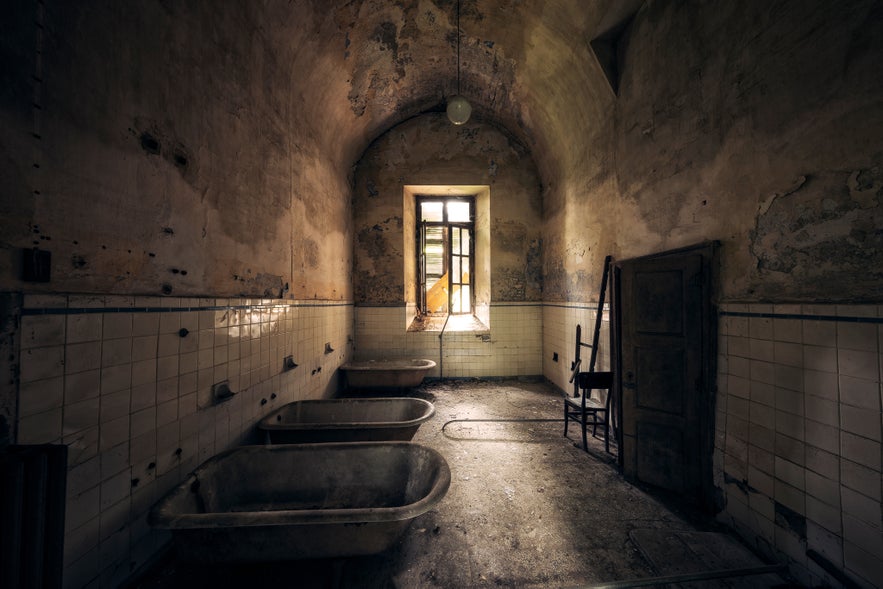
If you are looking for some inspiration or if you are just curious about the possibilities, then I suggest you look up some famous urbex photographers. A few of them are listed below:
-
Sven Fennema: A really famous photographer with lots of books and publications about abandoned places. Definitely worth checking out!
-
Mathias Mahling aka Glory of Disrepair: He has a wonderful portfolio with some treasures from around Europe.
-
The Proper People: They have the best urbex documentaries on Youtube. They are really cool guys and have an awesome portfolio from around the globe.
-
Henk van Rensbergen: He has a really clean style and has a totally different approach on the topic. Really impressive!
I wish you all the best and good luck for your next adventure. Remember to take care of yourself and the places that you visit – that way, nothing can go wrong. As always, be mindful that urban exploration photography is a dangerous hobby that can also be rewarding. Every building that you enter is at your own risk. Thanks a lot for reading!
About the author: Felix Röser is a photographer based in Germany. You can find more of his work on his website or by following him on Facebook and Instagram.
Learn photography in-field from the landscape photography professionals! Join one of our photography workshops and tours in Iceland!


